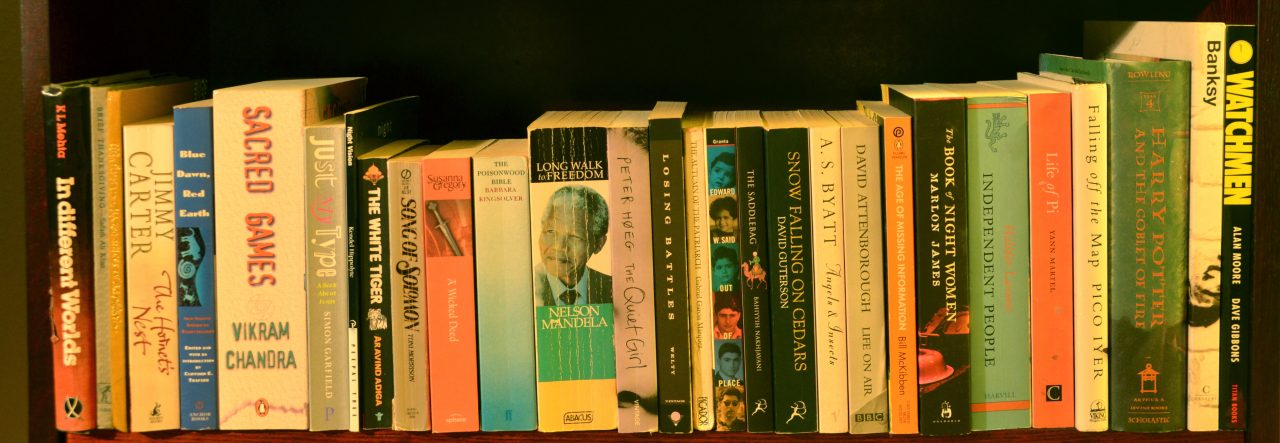Translated from French by Linda Coverdale
Published by Penguin / Rizzoli International Publications, 2014, 243 pages. Original version published in 2011.
“I’d promised myself that before I turned forty I would live as a hermit deep in the woods.”
That was Sylvain Tesson’s promise to himself, a promise that he kept. Tesson spent six months in a cabin on the shore of Lake Baikal in Siberia from February to July, watching the seasons change from bitter cold and snow to spring. He took along tools and provisions, lots of books, vast quantities of vodka—and analgesics for hangovers brought on by too much vodka.
He is driven to the cabin by some Russian friends. When he gets there, the lake is frozen over. The cabin is 10 feet by 10 feet, with a cast-iron stove that provides heat, “around which everything is organized”. It is “a little god with its own life” to which Tesson makes offerings of wood. From his window, he can see the peaks of Buryatia, 60 miles away.
His stay in the cabin is aimed at leaving no trace and doing minimal harm to the planet. He uses no fuel except the logs from the trees he fells, eats the fish he catches (supplemented by the spaghetti and tabasco he brought along), and walks everywhere.
“The cabin, realm of simplification. Beneath the pines, life is reduced to vital gestures, and time spared from daily chores is spent in rest, contemplation, small pleasures. The array of tasks to be done has shrunk. Reading, drawing water, cutting wood, writing, reading, pouring tea: such things become liturgies. In the city, each action takes place to the detriment of a thousand others. The forest draws together what the city disperses.”
But the forest is not just a retreat: it is also somewhere where refuseniks could hide. It is the one place where the State, which has eyes everywhere, cannot penetrate. Tesson finds a hut with a caved-in roof where a man hid from the KGB until the Soviet Union collapsed.
Many places where there was human habitation are now derelict, and nature is reclaiming the land. In Yakutia—an area larger than Argentina—coal-mining towns abandoned during perestroika are slowly being taken back by the taiga.
However, there are still individuals living in the forest, and Tesson gets visitors from time to time. His nearest neighbour is a six-hour walk away. Russian fishermen visit him, as do some of his friends from France. He is given two dogs, Aika and Bek, who stay with him during his time in the taiga, and they become his constant companions.
But solitude can also be damaging, as Tesson finds out when he visits the weather stations dotted around the country. The inspectors in these stations often live alone or in couples. They are expected to go out every three hours to record data and radio it back to their headquarters. “Their time is not their own, and the inflexible routine fosters mental confusion. This no-exit situation becomes a circus of disorders: the sufferers drink, tear into one another, develop mental pathologies.” A stark contrast to the life of the hermit, which is supposed to foster calm and self-knowledge. But then, as Tesson points out, the hermit’s time is his own.
And that is one of the joys of living cut off from the world: no distractions, no one demanding your time (except for the occasional fishermen). Tesson writes about the peace of doing nothing, of non-action: having the time to quieten your thoughts and heighten your perception of the landscape around you, being able to observe the minutest detail, hearing “the shock of a petal striking the surface of a pond”.
Tesson writes lyrically about the landscape. He camps at 2,600 feet, and waking up, finds the “snow is crisscrossed by the tracks of minks, hares and foxes. The forest thrums faintly with invisible life. Bushy lichens caress my face.” Fierce winds buffet the cabin at night, and the ice on the lake cracks with what sounds like massive explosions.
When the time comes to leave, he does so reluctantly. He finds that he did not miss his old life during his time in the taiga.
There are some odd moments, though. Tesson classes food depending on how much grey energy it has. Grey energy is when “the caloric value of the food is less than the energy necessarily expended in its production and transportation”. In his list of historic meals with low grey energy, he includes Christian missionaries who were eaten by cannibals in Polynesia. (I guess there was no energy expended in transportation, although if you count the missionaries’ journey, the grey energy would go up.)
Consolations of the Forest is essentially a paean to solitude and to nature. It made me crave the quiet of being cut off from the busyness and noise of daily life. This is life stripped down to its basics, where your needs are pared down to the minimum, and nature is untamed and glorious. I cannot chop wood or fish, so I guess I won’t be heading to the taiga. But I can dream and revel in this vicarious journey with Tesson.

